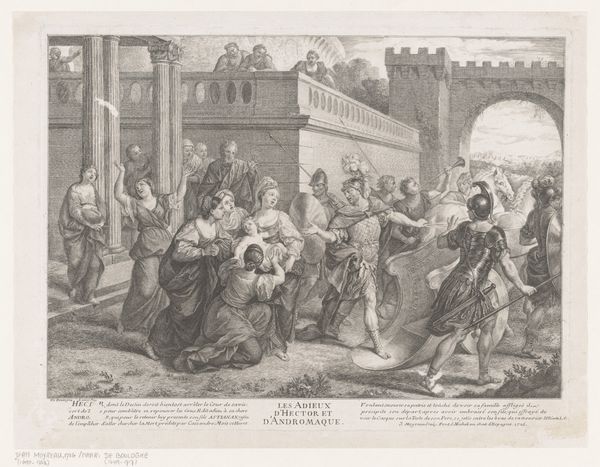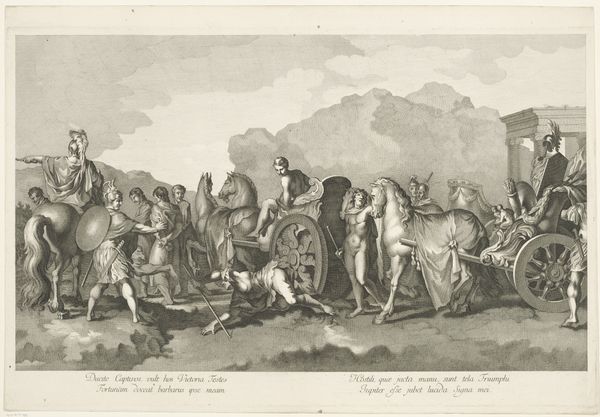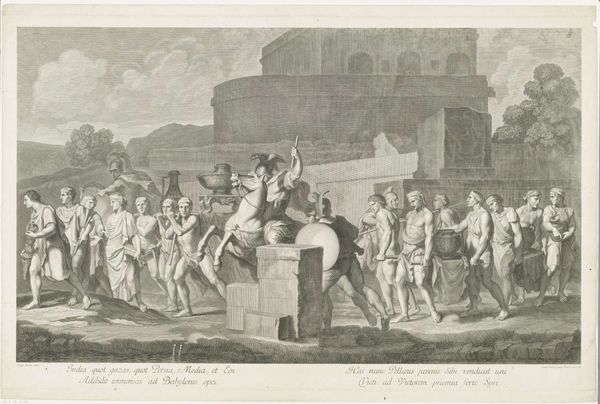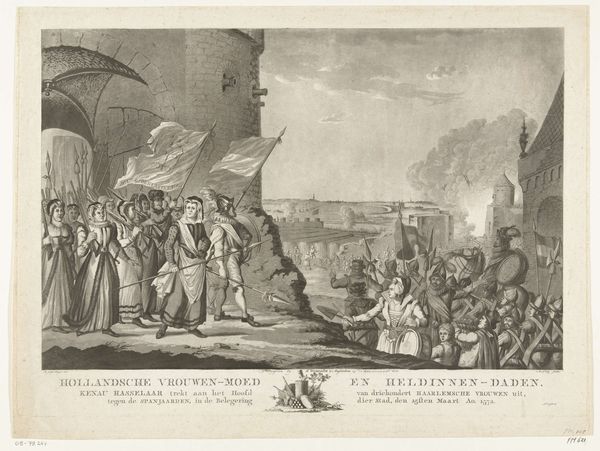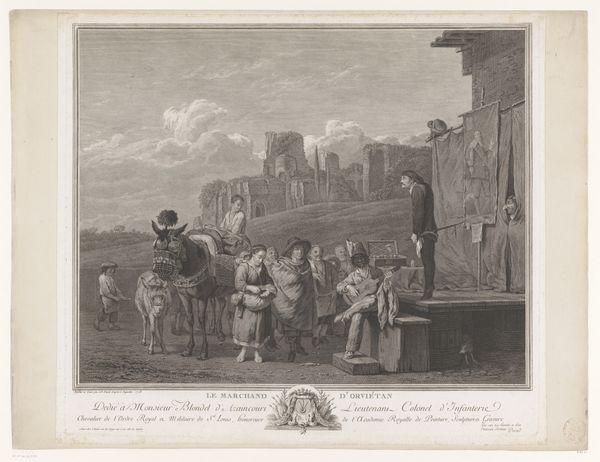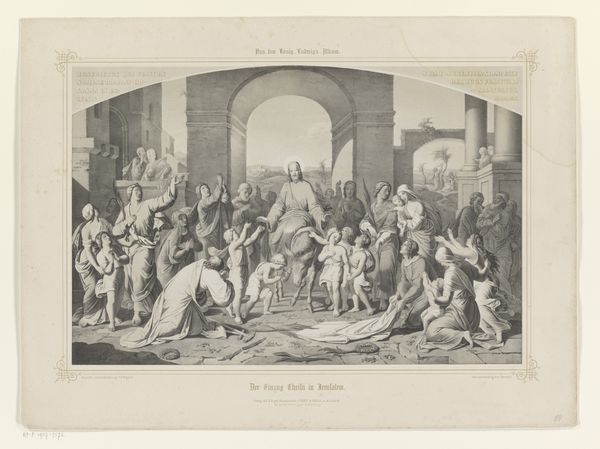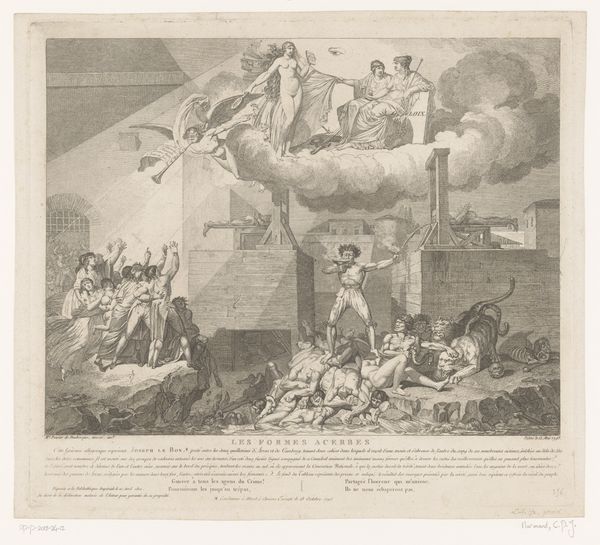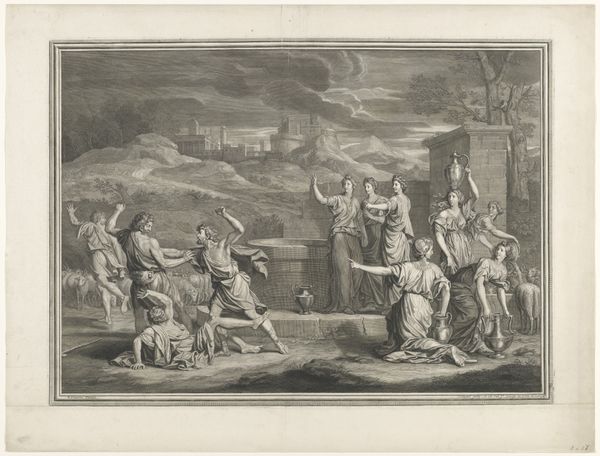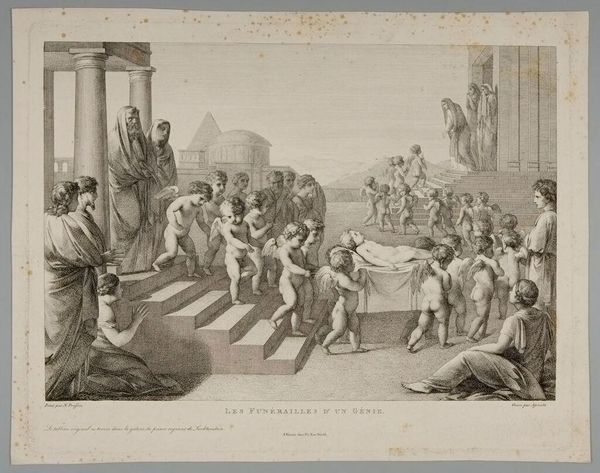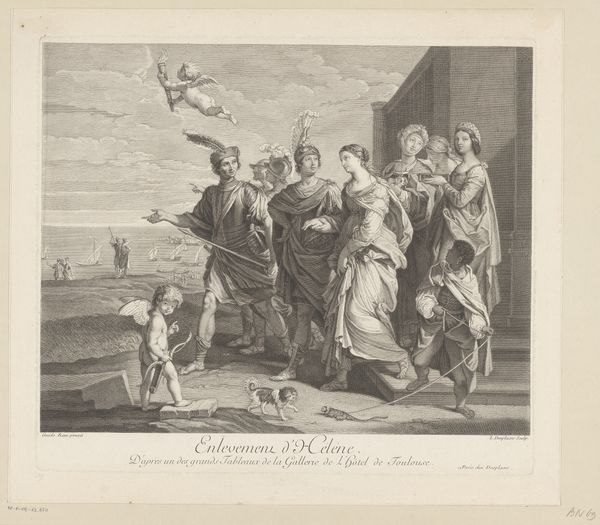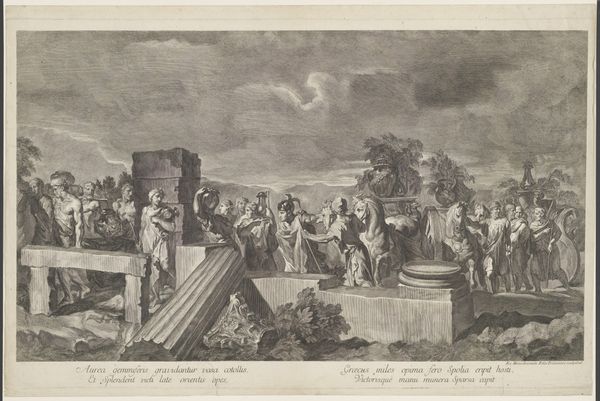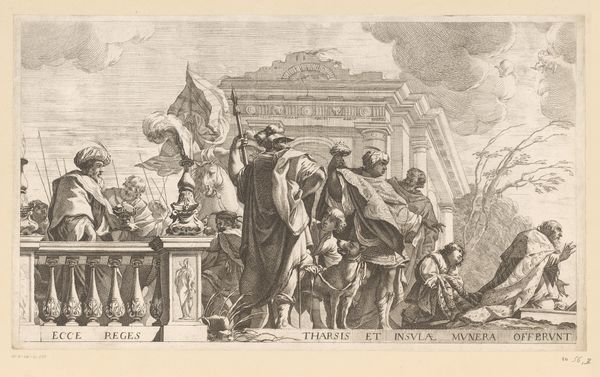
print, engraving
#
narrative-art
#
baroque
# print
#
figuration
#
line
#
history-painting
#
engraving
Dimensions: height 657 mm, width 970 mm
Copyright: Rijks Museum: Open Domain
Editor: So, here we have "Wegvoeren van oorlogsbuit en gevangenen"—that's "Removal of War Booty and Prisoners" for us non-Dutch speakers—an engraving by Antonio Pazzi, dating from around 1716 to 1766. It's a rather bleak scene, all grays and stark lines. I’m immediately struck by its formality, the staged almost theatrical arrangement of the figures. What captures your attention most in this piece? Curator: It’s fascinating, isn't it? I am drawn to how Pazzi uses line. Each stroke seems deliberate, contributing to this sense of controlled chaos. He has this incredible skill in suggesting volume and movement despite the limitations of the medium. It feels like peering into a history book that's been reimagined as a delicate ballet. This piece invites us to think about the glory and the grit, if that makes sense... the cost of conquest... the very public performance of power that's really stripped bare here. I wonder, do you find the rigidity takes away from the emotional impact? Editor: That's a thought. It *is* rather...composed, isn't it? Almost too composed to be truly emotionally resonant. But maybe that distance *is* the point? Showing the cold, calculated nature of conquest? Curator: Precisely. There's an intentional detachment here, which forces the viewer to grapple with the subject matter intellectually. And also to project… It becomes a space for *us* to fill in what's missing, the messy bits in the unsaid. It's more like, you become co-author with Pazzi, yeah? Editor: Hmm, I never considered it that way. That reframes my entire understanding of it. It’s much more engaging when I feel involved, somehow. Curator: And that, my friend, is the magic of art – it doesn't just show, it invites you to participate, to become part of its ever-evolving story.
Comments
No comments
Be the first to comment and join the conversation on the ultimate creative platform.
